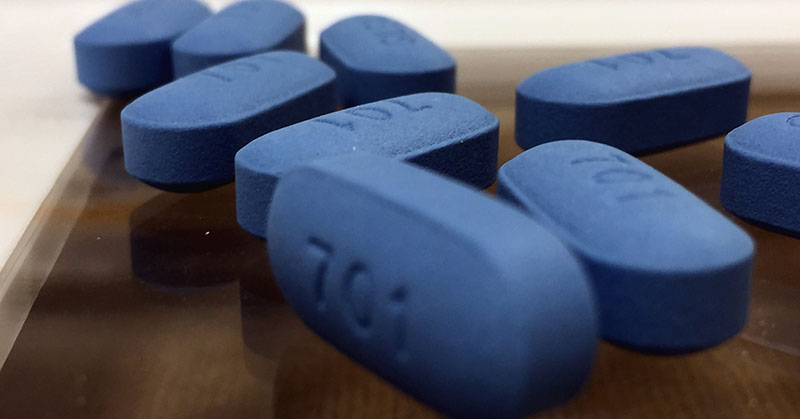
Credit: NIAID
Compared to annual HIV screening alone, generic daily oral HIV pre-exposure prophylaxis (PrEP) with HIV screening every three months would result in fewer HIV acquisitions, longer life expectancy, and fewer HIV-associated costs among young men who have sex with men in the United States. These predictions, which come from a simulation study supported by the National Institutes of Health, illustrate the value of promoting PrEP use in this population.
Researchers led by Anne M. Neilan, M.D., M.P.H., of Massachusetts General Hospital applied an established simulation model 
Background
About one in five new HIV diagnoses in the United States occur among youth ages 13 to 24 years. Young men who have sex with men are particularly vulnerable to HIV acquisition, accounting for 81% of new diagnoses in this age group in 2019. When taken daily as prescribed, oral PrEP reduces the risk of sexually acquiring HIV by about 99%. Compared to older men who have sex with men, young men are less likely to start PrEP and tend to have more challenges adhering to PrEP and remaining in care.
HIV is a chronic disease, and antiretroviral therapy (ART) to control the virus must be taken for life. Even with effective treatment, people with HIV remain at higher risk for other health conditions, such as cardiovascular disease. By preventing new HIV acquisitions and the lifelong care they would entail, PrEP offers the potential for both clinical and economic benefit. The recent advent of generic versions of the PrEP medication tenofovir disoproxil fumarate/emtricitabine (TDF-FTC) has decreased the cost of PrEP substantially compared with branded drug prices.
Results
To tailor their simulation model for young men who have sex with men, investigators used data from two studies conducted by NICHD’s Adolescent Medicine Trials Network for HIV Interventions. These studies examined the acceptability and feasibility of daily TDF-FTC among young men ages 15 to 22 years considered at higher risk of acquiring HIV because they engaged in condomless anal sex, had multiple sexual partners, or had other sexually transmitted infections (STIs).
The model predicted that over 10 years, the generic PrEP strategy would reduce new HIV acquisitions from 37% to 30% and decrease costs by $5,000 per person, compared to annual screening. The finding that PrEP would provide more benefits at lower cost held up across several scenarios, including a range of ART prices, HIV incidence rates, and PrEP retention rates. Even if as few as 6% of young men remained in the PrEP program after six years, the strategy would still have benefits over annual screening. The researchers also found that offering generic PrEP in addition to screening every three months would be cost-saving compared to every-three-month screening alone.
Significance
“Taken together, these findings emphasize the clinical and economic value of expanding and promoting the broad use of daily oral PrEP in young men who have sex with men in the United States,” the authors write. The analysis supports the current PrEP clinical guidelines issued by the Centers for Disease Control and Prevention and the U.S. Preventive Services Task Force’s recent recommendation that clinicians should prescribe PrEP to adolescents and adults who are at increased risk of acquiring HIV. The authors also note the importance of addressing racial, geographic, and age-based inequities in access to PrEP.
Next Steps
The authors propose that expanding PrEP prescription beyond specialty clinics to primary care settings, as well as developing novel PrEP delivery options, will be critical to improving accessibility and equity. They also note that because many PrEP programs also offer screening for STIs other than HIV, future research may weigh the additional costs and benefits of screening and care for such infections.
Reference
Amick AK, Eskibozkurt GE et al. Daily oral HIV pre-exposure prophylaxis among young men who have sex with men in the United States: cost-saving at generic drug price. Clinical Infectious Diseases DOI:10.1093/cid/ciad566 (2023)

 BACK TO TOP
BACK TO TOP